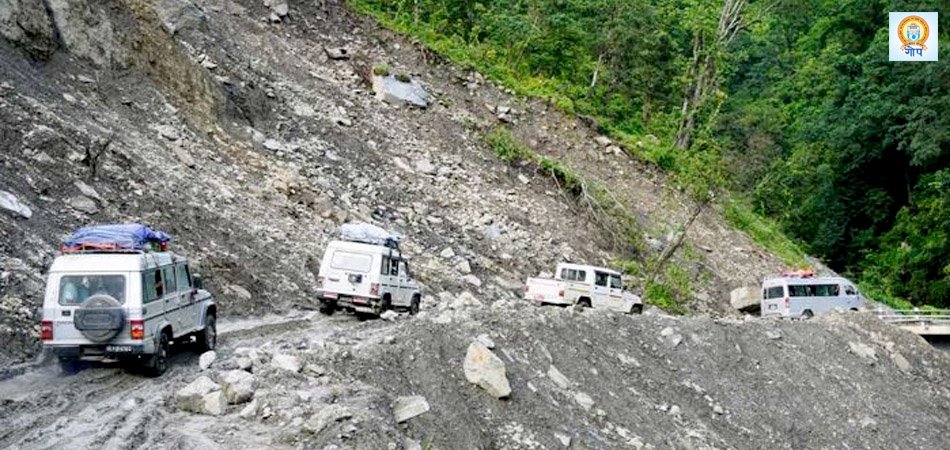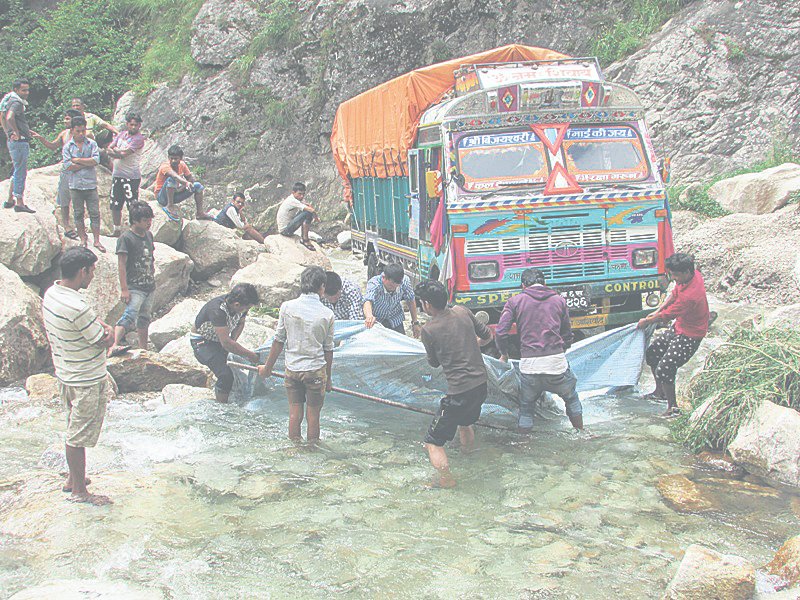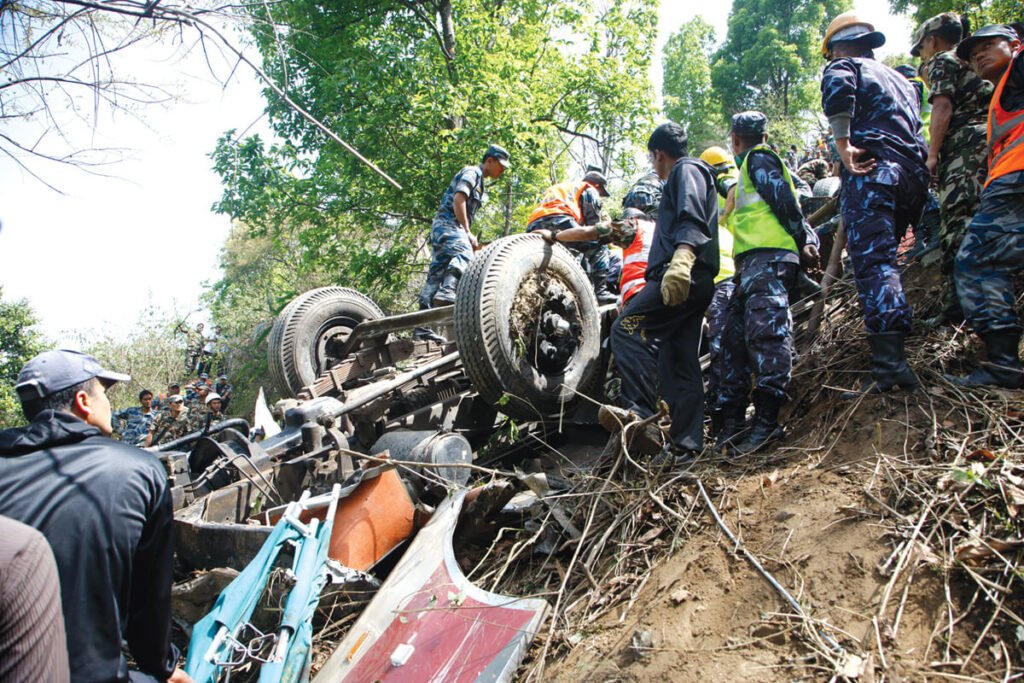

Current State of Road Safety in Nepal

Road safety in Nepal remains a significant concern, with alarming statistics revealing the extent of the problem. Recent data indicates a troubling rise in road accidents, fatalities, and injuries, painting a stark picture of the current state of affairs. According to the Department of Transport Management, Nepal witnesses approximately 13,000 road accidents annually, resulting in over 2,500 deaths and more than 15,000 injuries. These figures underscore the urgency of addressing road safety issues in the country.
Several factors contribute to the high incidence of road accidents in Nepal. Poor road conditions are a primary cause, with many roads being inadequately maintained, narrow, and riddled with potholes. The rugged terrain and frequent landslides exacerbate these issues, making travel perilous. Additionally, the lack of proper traffic enforcement further complicates the situation. Traffic laws are often not strictly enforced, leading to rampant violations such as speeding, overloading, and reckless driving.
Driver behavior also plays a crucial role in road safety. Many drivers in Nepal lack proper training and awareness of traffic rules. This is compounded by the widespread use of older vehicles that may not meet safety standards. Distracted driving, intoxicated driving, and the failure to use seat belts or helmets are common practices that significantly increase the risk of accidents.
The economic and social impacts of road safety issues are profound. The high rate of accidents places a considerable burden on the country’s healthcare system and leads to substantial economic losses. Families of victims often face financial hardship, and the loss of productive members of society affects the overall economic growth. Moreover, the psychological trauma experienced by survivors and their families cannot be overlooked, contributing to long-term social challenges.
Addressing these multifaceted road safety challenges requires a comprehensive approach, involving infrastructure improvements, stricter traffic enforcement, and public awareness campaigns. Without concerted efforts, the human and economic toll of road accidents in Nepal will continue to rise, impeding the country’s progress and development.
Impact of Poor Road Conditions

The deteriorating state of roads in Nepal significantly contributes to the country’s road safety issues. The presence of potholes, unpaved roads, and inadequate signage are among the primary concerns. These deficiencies not only pose dangers to daily commuters but also hamper the transportation of goods and emergency services, leading to broader economic and social challenges.
One of the most pressing issues is the prevalence of potholes. These can be found on both urban and rural roads, creating hazards for vehicles and pedestrians alike. For instance, the arterial roads in Kathmandu Valley, including the Ring Road, are notorious for their poor condition. Potholes can cause severe damage to vehicles, leading to costly repairs and, more alarmingly, accidents that may result in injuries or fatalities.
In rural areas, the situation is even graver, with many roads remaining unpaved. Regions such as Karnali and Sudurpashchim experience significant difficulties due to their unpaved roads, which become nearly impassable during the monsoon season. The lack of proper road infrastructure in these areas isolates communities, limiting their access to essential services such as healthcare and education.
Inadequate signage further exacerbates the problem. Many roads lack proper markers, making navigation difficult, especially for those unfamiliar with the routes. This is particularly problematic in mountainous regions where sharp turns and steep inclines are common. The absence of warning signs can lead to dangerous situations, increasing the likelihood of accidents.
Monsoon seasons, characterized by heavy rainfall, worsen the already poor road conditions. Roads often become flooded or washed away, creating treacherous travel conditions. The effect on daily commuting is profound, with delays and road closures becoming frequent occurrences. Transporting goods becomes a challenge as well, affecting local economies and supply chains.
Emergency services also face significant hurdles due to poor road conditions. Ambulances and fire trucks struggle to reach their destinations promptly, which can be the difference between life and death. The inefficiency of emergency response due to road conditions underscores the urgent need for infrastructure improvements.
Political Challenges and Policy Failures

Nepal’s road safety issues are intricately linked to the country’s political instability and policy failures. A significant factor contributing to these problems is widespread corruption, which often redirects funds meant for road maintenance and development into private pockets. This diversion of resources not only delays essential projects but also results in poor-quality infrastructure that fails to meet safety standards. The lack of accountability among officials further exacerbates the situation, as there are rarely any repercussions for mismanagement or negligence.
The inefficiency in resource allocation is another critical challenge. Funds that could be used to improve road conditions are frequently misused due to bureaucratic red tape. This inefficient use of resources leads to prolonged project timelines and substandard work, leaving roads in a deteriorated state. Furthermore, political instability means that policies are often short-lived and lack continuity. Frequent changes in government result in shifting priorities, making it difficult to implement long-term road safety measures.
Bureaucratic hurdles also play a significant role in preventing the effective implementation of road safety initiatives. The approval process for infrastructure development projects is often mired in delays due to multiple layers of bureaucracy. This not only slows down the progress of necessary improvements but also discourages potential investors from participating in road development projects. The cumbersome approval process can also lead to a lack of coordination among various governmental and non-governmental entities responsible for road safety.
Moreover, the absence of a comprehensive road safety strategy further complicates the issue. While there are policies in place, they are often fragmented and lack a cohesive approach. This piecemeal strategy fails to address the root causes of road safety problems effectively. Without a unified and well-coordinated plan, efforts to improve road conditions and safety measures remain disjointed and largely ineffective.
Potential Solutions and Recommendations

Improving road safety in Nepal necessitates a multifaceted approach that addresses both immediate and systemic issues. Short-term strategies must focus on upgrading road infrastructure, implementing stricter traffic laws, and enhancing driver education programs. Upgrading road infrastructure is crucial; it involves not only repairing and maintaining roads but also building new ones to meet modern safety standards. This includes ensuring proper signage, pedestrian crossings, and adequate lighting.
Implementing stricter traffic laws can significantly reduce road accidents. This requires rigorous enforcement of existing laws and the introduction of new regulations where necessary. For instance, enforcing seat belt usage, helmet laws for motorcyclists, and stringent penalties for traffic violations can deter risky behaviors. Additionally, establishing regular vehicle inspections can ensure that vehicles on the road are in safe working condition.
Driver education programs should be enhanced to ensure that all drivers are well-informed about road safety practices. These programs can be incorporated into school curriculums and community initiatives, emphasizing defensive driving techniques and the dangers of drunk driving. Furthermore, refresher courses for older drivers and mandatory training for commercial drivers can help maintain high safety standards.
Improving political accountability and transparency in road development projects is essential for sustainable road safety improvements. Establishing independent bodies to oversee road construction and maintenance projects can help ensure that funds are used appropriately and that projects are completed to high standards. Public reporting and community involvement in these projects can further enhance transparency and accountability.
Drawing from successful road safety initiatives in other countries can provide valuable insights. For example, Sweden’s Vision Zero policy, which aims to eliminate all traffic fatalities and severe injuries, could be adapted to Nepal’s context. Similarly, Australia’s Black Spot Program, which targets high-risk areas for improvement, could be implemented to identify and rectify dangerous road segments in Nepal.
By combining these strategies, Nepal can make significant strides towards improving road safety and reducing the number of traffic-related incidents, ultimately creating a safer environment for all road users.






Leave a Reply